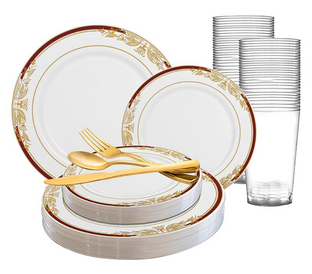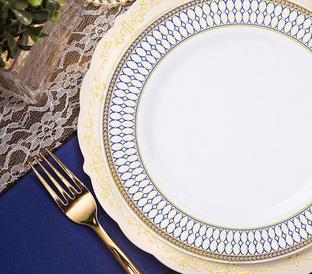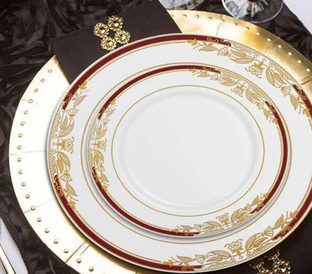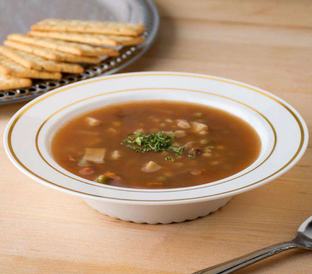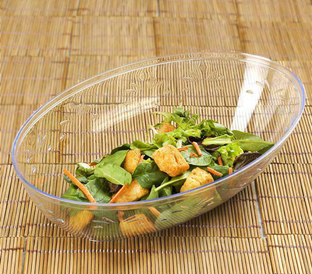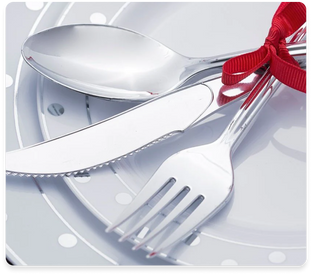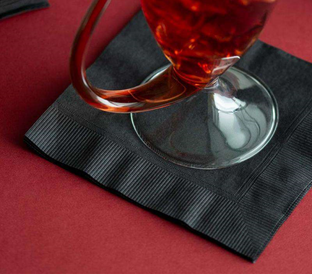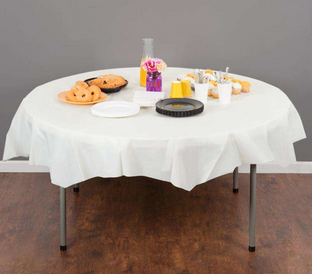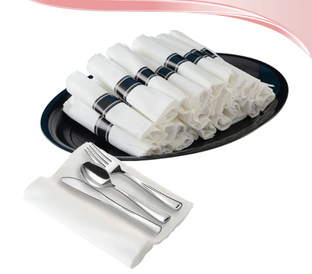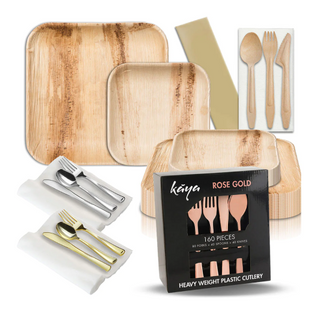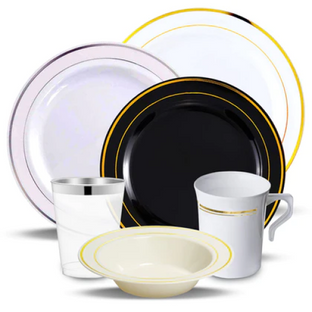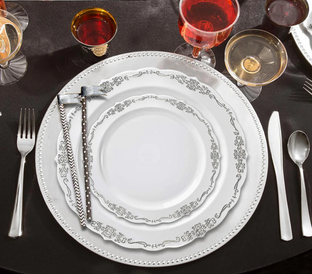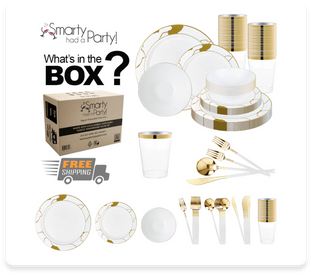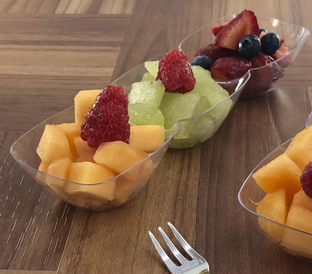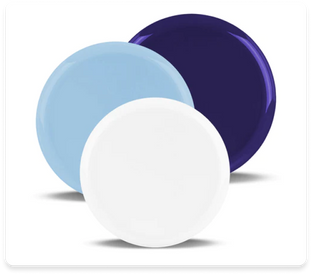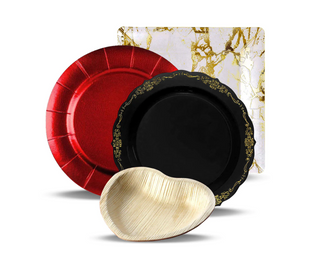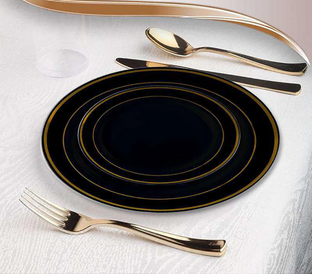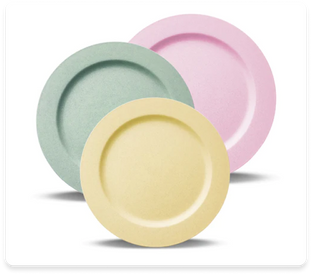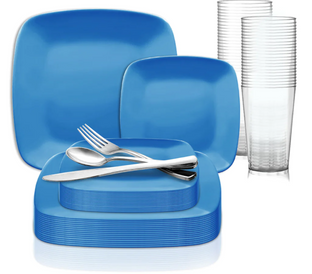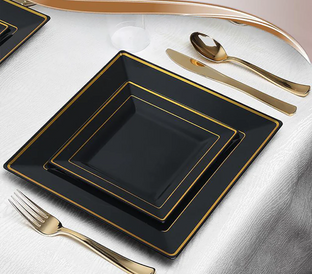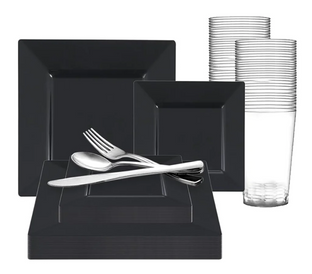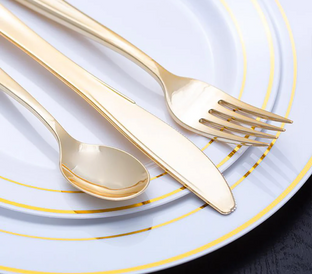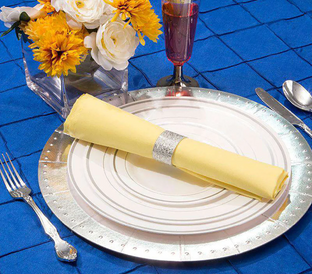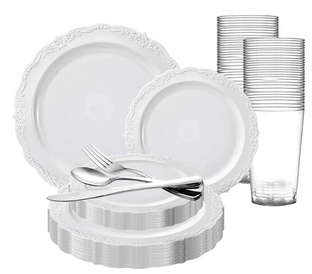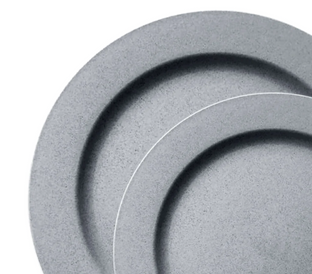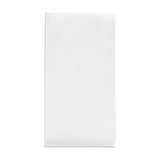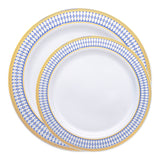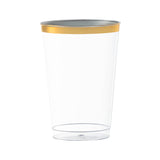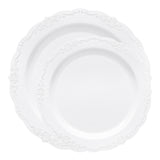

Plastic vs. Paper Plates: Which is Better?
Plastic vs Paper Plates
Choosing the right type of disposable dinnerware can be tricky, especially when considering the environmental impact, cost, and convenience. Understanding the benefits and drawbacks of each can help you make an informed choice that aligns with your needs and values.
Environmental Impact Comparison
When it comes to the environment, both plastic and paper plates have their pros and cons. Let's break down their impact from production to disposal.
Plastic Plates
Pros: Durability and Resistance to Moisture:
- Plastic plates are incredibly durable and can withstand moisture and grease, making them ideal for a variety of foods. These strong disposable plates for hot food maintain structural integrity without bending or leaking, whether serving a juicy steak or a saucy pasta. This durability makes them a reliable choice for outdoor events, picnics, and parties where sturdiness is a priority.
- Plastic plates are less likely to break or get soggy. Unlike paper plates, which can become compromised when exposed to wet or greasy foods, plastic plates remain robust and effective. This resistance to moisture ensures that your meal stays on the plate, reducing the risk of spills and messes and providing a more enjoyable dining experience.
Cons: Environmental Concerns:
- Plastic plates are challenging to recycle. While some types of plastic can be processed and reused, many disposable plastic plates are not easily recyclable due to contamination from food waste or the specific types of plastic used.
- The production of plastic involves significant energy consumption and the use of non-renewable resources, contributing to pollution and greenhouse gas emissions.
Read our article on whether disposable plastic plates are really recyclable for more insights into their recyclability.
Paper Plates
Pros: Biodegradability and Compostability:
- Paper plates are generally more environmentally friendly. They are biodegradable and can be composted, reducing their impact on landfills. When properly composted, paper tableware can enrich soil, making them a more sustainable choice for eco-conscious consumers.
- Paper plates break down faster than plastic, causing less long-term environmental harm. Depending on conditions, paper plates can fully decompose within weeks or months, significantly reducing their footprint.
Cons: Sustainability Issues:
- The production of paper plates involves cutting down trees, which contributes to deforestation and habitat destruction.
- Manufacturing paper plates can also consume a significant amount of water and energy.
For additional details on the sustainability of paper plates, explore our article on microwaving paper plates and related concerns.
Cost Comparison of Disposable Plates
Cost is another crucial factor to consider when choosing between plastic and paper plates.
Plastic Plate vs Paper Plate Comparison
- Initial Purchase: Plastic plates are usually more budget-friendly when considering the cost per unit compared to paper plates. Disposable tableware advantages low price and easy cleanup makes them a practical and affordable option, especially for events with a large number of attendees. Their lower initial cost allows for significant savings, which can be particularly beneficial for large-scale gatherings or events with tight budgets.
- Long-Term Implications: While plastic plates may be initially cheaper, their long-term environmental cost is higher due to the pollution they cause. Although slightly more expensive, paper dinnerware can be a more sustainable option in the long run, especially if composted properly. Check out our collection of the best paper plates for hot food for various options.
Consumer Preferences and Trends
Current trends show a shift in consumer preferences towards more environmentally friendly options.
Plastic Plates
- Plastic plates are a popular choice for indoor and outdoor dining due to their sturdiness, resistance to breakage, and affordability. These plates are often favored for large gatherings, picnics, and events where convenience and cost-effectiveness are essential.
- Plastic innovations are gaining traction, offering a more eco-friendly alternative to traditional plates. For more insights on how disposable plastic plates are evolving to meet sustainability goals, check out our article on the future of disposable plastic plates.
Paper Plates
- Many consumers choose paper plates due to their biodegradability and compostability. These qualities make paper plates a preferred option for those looking to minimize their environmental footprint.
- There is also a growing demand for paper plates made from recycled materials and sustainable sources.
Tips for Making an Informed Choice of Disposable Tableware
Choosing the correct type of disposable plates can be challenging, given the various factors to consider. Here are some tips to help you make an informed choice based on your needs and values:
- Evaluate Your Event Needs: Consider the type of event, the number of guests, and the types of food being served. Durable plastic plates are better for large outdoor events, while paper plates suffice for smaller indoor gatherings.
- Environmental Impact: If reducing your ecological footprint is a priority, opt for compostable paper plates or 100% recyclable plastic plates. For a deeper dive into the environmental impact of disposable plates, explore our article on what type of material is best for party dinnerware.
- Health Concerns: Be mindful of potential health risks associated with disposable plates. Choose BPA-free plastic plates to avoid chemical leaching, and select paper plates that minimize the use of harmful bleaching agents and additives.
- Budget Considerations: Balance your budget with your environmental and health priorities. While plastic plates offer upfront cost savings, investing more in sustainable paper plates can be more beneficial for the environment in the long run.
- Trends and Innovations: Look for emerging trends and new products that offer better sustainability without compromising quality.





